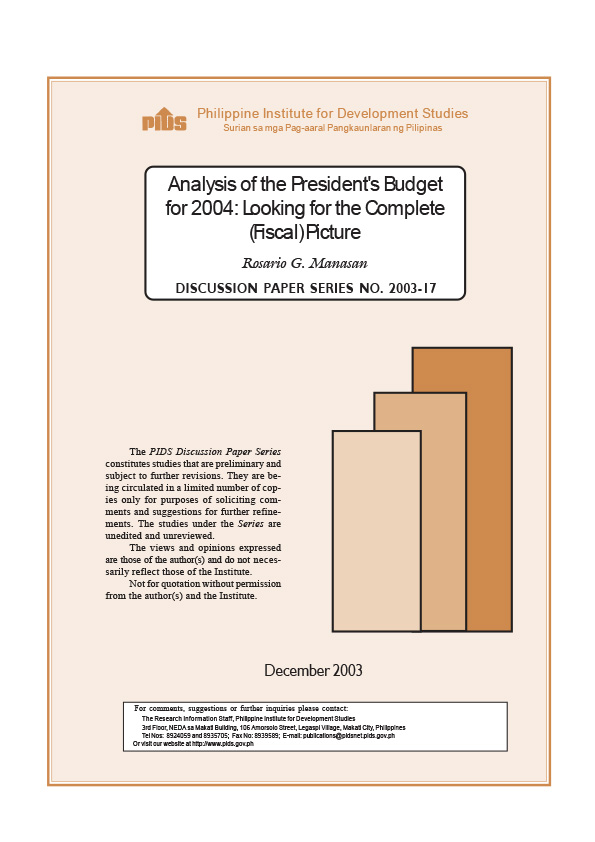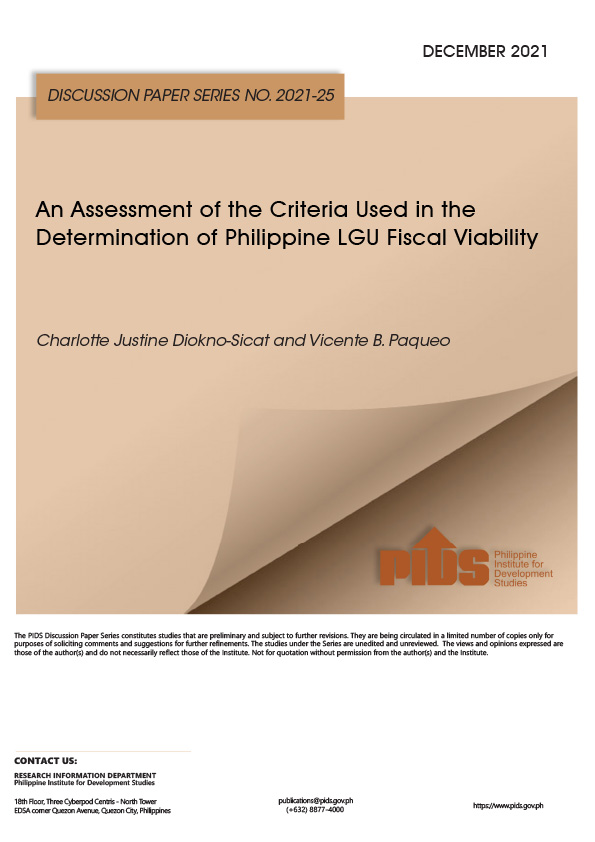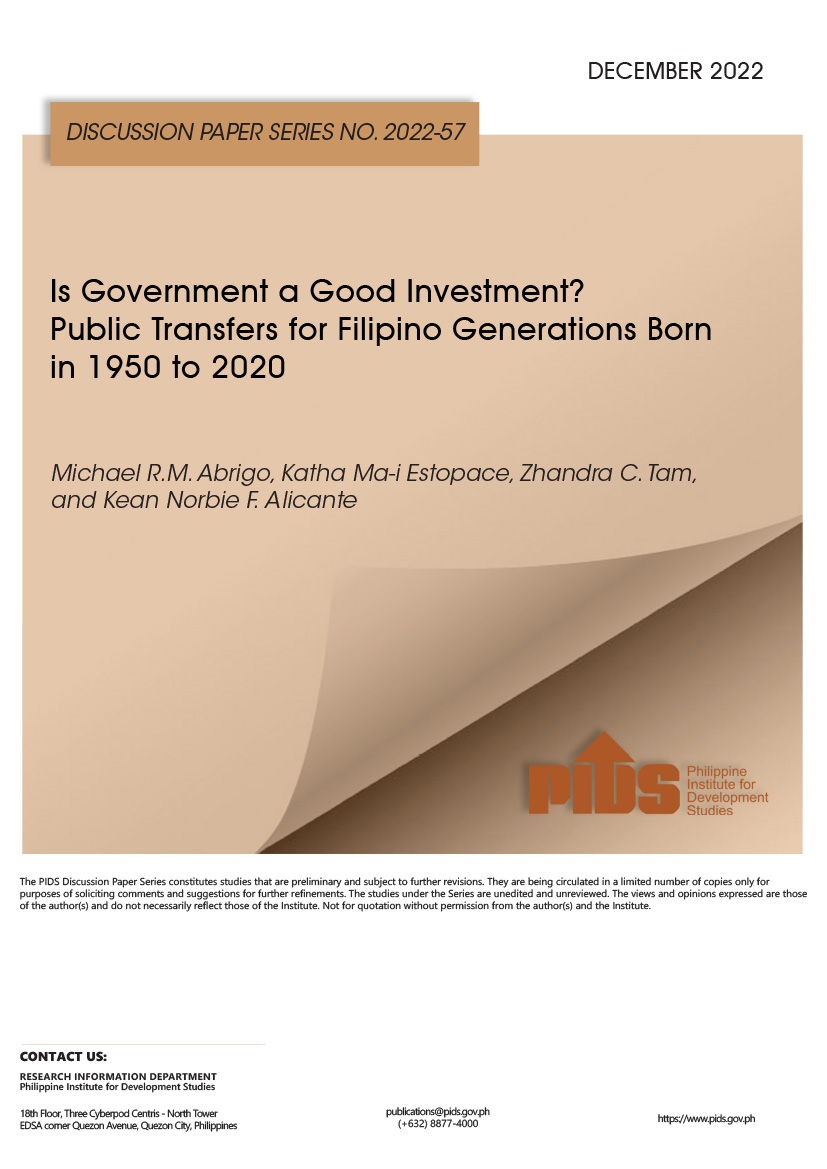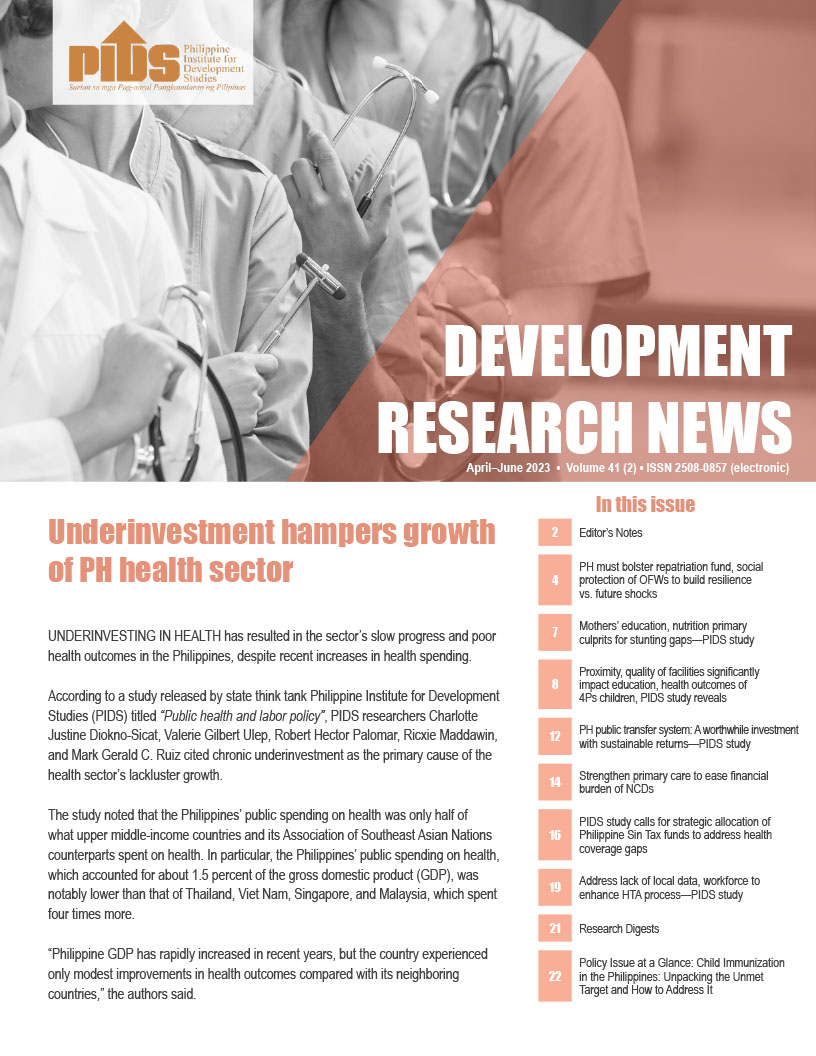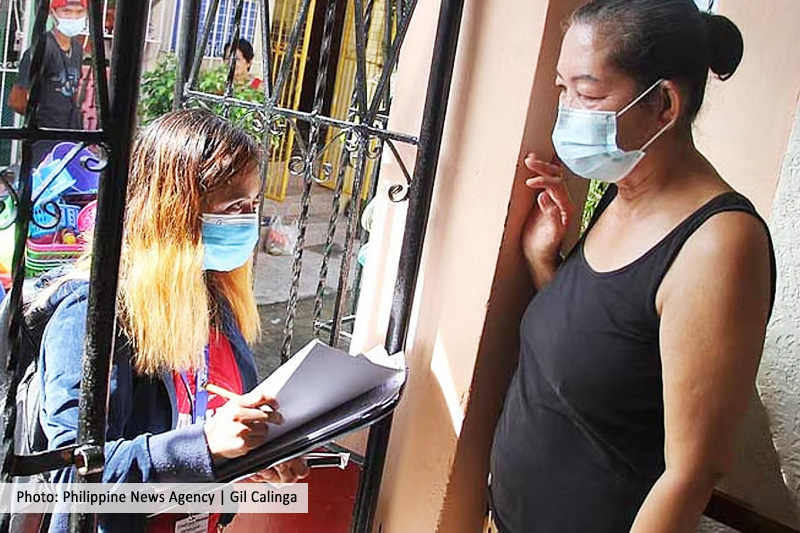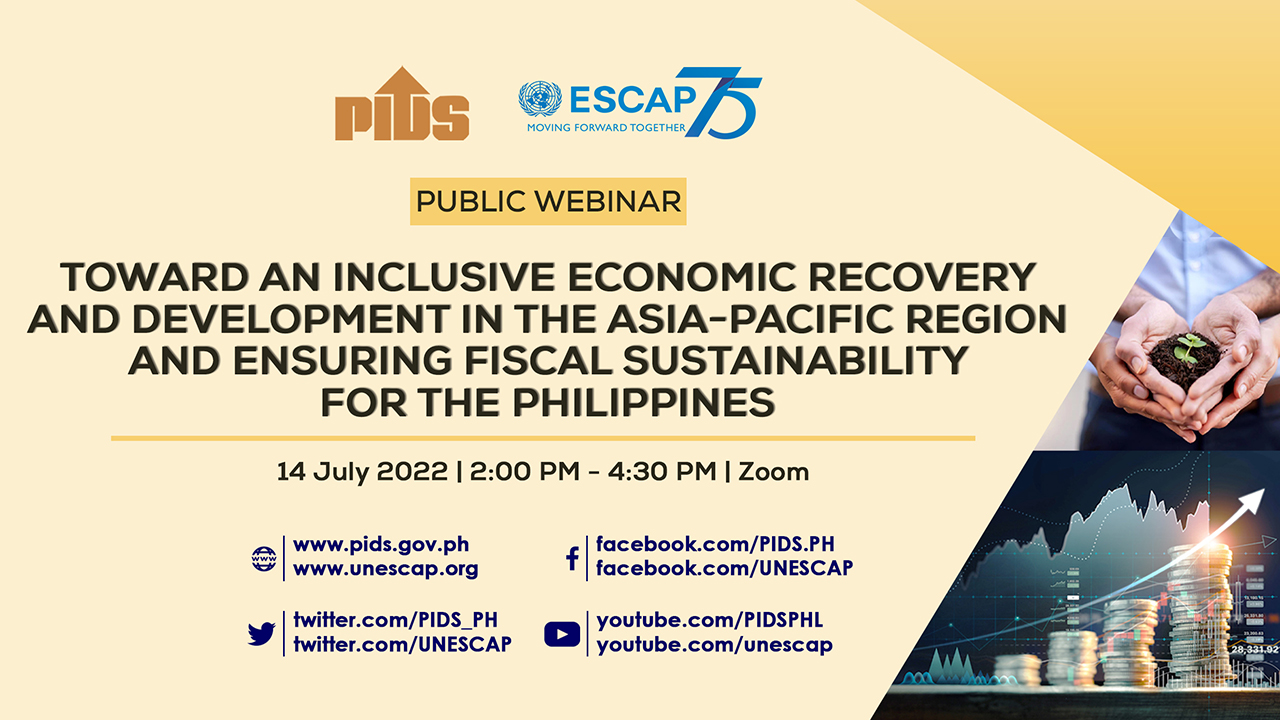The President’s Budget for 2004 is the administration’s last prior to the forthcoming presidential elections in May 2004. Thus, it is but timely to assess not only the proposed 2004 budget itself but also the present administration’s fiscal performance in the last three years. The evaluation of the President’s Budget for 2001-2004 that is presented in this paper is composed of three parts: (i) an evaluation of the overall fiscal outlook as projected in the President’s Budget in terms of its sustainability; (ii) an examination of its revenue program; and (iii) the congruence of the expenditure program with policy pronouncements and budgetary intent as articulated in the Medium-Term Development Plan (MTPDP). This paper also highlights why it is critical to always have a comprehensive picture of the public sector. It documents how the positive fiscal outlook for the national government in 2003-2004 masks the rapid deterioration in the fiscal position of the nonfinancial public sector mainly because of the huge losses registered by a number of GOCCs. While the nonfinancial public sector in the aggregate is projected to have a small primary surplus in 2004 after posting primary deficits in 2002-2003, its consolidated fiscal position is deemed to be unsustainable in 2003-2004. The solutions to this problem are not easy: increasing tariffs, privatization and regulatory reform.
Citations
This publication has been cited 1 time
- World Bank. 2005. Philippines: From short-term growth to sustained development. World Bank Publications - Reports 8552. The World Bank Group.

